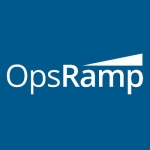
Manager of Operations at a outsourcing company with 1,001-5,000 employees
Expensive, but delivers what we need
What is most valuable?
Well suited to handle MS Apps!
Good community to get support from
Good reporting.
Lots of features in the "package"
What needs improvement?
Need work to minimize the amount of events transferred to Incident systems.
High License cost for the 2007 version.
Super High cost for the 2012 version due to change to a CPU based.
Need lots of HW to handle 1000 servers application operations
What other advice do I have?
The good reporting capabilities was one of the major functions which made us choose SCOM as the tool for handling MS application operations (only used for that, not the OS platforms).
Disclosure: I am a real user, and this review is based on my own experience and opinions.
SCOM Administrator at a government with 201-500 employees
An extensible and versatile product with good community support
Pros and Cons
- "The most valuable feature is the extensibility, as there are really no limits as to what you can do with it."
- "The interface is a little bit cumbersome and certain actions could be simplified."
What is our primary use case?
Our primary use case is to monitor infrastructure and the Windows ecosystem. We also create distributed applications within SCOM to monitor our custom applications. It is deeply integrated into our systems.
What is most valuable?
The most valuable feature is the extensibility, as there are really no limits as to what you can do with it.
The fact that you can use PowerShell is a big plus.
What needs improvement?
SCOM has a lot of powerful features but it is not simple to use. We are using a third-party presentation layer to show all of the data because SCOM does not show it in a very nice and easy way. It is not an interface that you would expect to see in 2020.
The interface is a little bit cumbersome and certain actions could be simplified. For example, many of the things that we do require clicking through many menus.
Maintaining this product is very hard to do.
For how long have I used the solution?
We have been using SCOM for about four years.
What do I think about the stability of the solution?
This product is quite robust.
What do I think about the scalability of the solution?
I don't have much experience in scaling out and adding more servers, although I think that it's fairly straightforward. It may not be great, but it's better than many products.
How are customer service and technical support?
I have not personally dealt with official technical support, but non-official support from various blogs and websites is excellent. There are a few bloggers that are really dedicated to the products, as they are Microsoft people, but this is not official support per se.
Overall, I would say that product support is good and better than expected.
How was the initial setup?
Deploying SCOM itself is of medium difficulty. I would say that it is not too easy and not too complicated. However, configuring all of the monitoring and all of the management packs is somewhat complex. It's an ongoing job and requires more than one person. Actually, in our case, it requires that everybody contribute.
If you want to configure SCOM to work properly and bring value to your organization, it is very hard, which is one of the bad things about it.
What's my experience with pricing, setup cost, and licensing?
SCOM is part of the System Center suite and I am satisfied with the pricing. The entire suite is expensive but it comes with a lot of functionality.
What other advice do I have?
Overall, I find that this is a good solution but the presentation layer is really bad. If the interactive part of the console were improved then it would be better.
I would rate this solution an eight out of ten.
Which deployment model are you using for this solution?
On-premises
Disclosure: I am a real user, and this review is based on my own experience and opinions.
Buyer's Guide
SCOM
March 2025
Learn what your peers think about SCOM. Get advice and tips from experienced pros sharing their opinions. Updated: March 2025.
849,190 professionals have used our research since 2012.
SCOM Senior Engineer at a retailer with 1,001-5,000 employees
I like the ability to create Management Packs to monitor different programs or devices.
What is most valuable?
Its flexibility, the ability to create Management Packs to monitor different programs or devices. No matter what it is you want to monitor or how you want to monitor, it can be done. You may have to create the code using VBScript or PowerShell, and XML, but it can be done. There are always lots of examples online that you can work from that will save you lots of time.
How has it helped my organization?
The company to which I am currently contracted is in the process of creating SNMP Management packages for our network devices. Very steep learning curve but the results are fantastic. Anything that can be accessed via SNMP commands, SCOM can retrieve via SNMP Gets. This fulfills the network monitoring need extremely well and now we are getting alerts that allow us to pre-empt problems before they become service issues. This is making our network much more stable.
What needs improvement?
There are always areas that can be improved in any product, but overall SCOM has matured very well over the years and appears to be at the point where only minor improvements need to be made. Since MS sends out updates regularly, these improvements can be made on the fly with very little interruption in service.
For how long have I used the solution?
I have used this solution for 10 years.
What was my experience with deployment of the solution?
I did not encounter any issues with deployment. This is one area where there is plenty of documentation. It would be nice if more companies actually retained a PME for rollouts instead of just letting their brightest take a shot at it. I have had to clean up behind a lot of best efforts that could have been avoided by just bringing a contractor in for a couple of months. It seems that the biggest mistake is putting all of the management packs available in at the same time before talking to the owners that will be getting the alerts. Off-the-shelf MPs are very verbose and need to be tuned for the environment and the way in which alerts are going to be handled.
How are customer service and technical support?
Technical support is pretty good: very responsive, good level of understanding, rare to have to go beyond second-level support.
Which solution did I use previously and why did I switch?
I chose it after investigating Nagios, SiteScope, and SolarWinds. Initially, the thing that sold me was the Authoring console for creating MPs. It made it very easy to get started and produce right away. Now that MS has discontinued it, I use Visual Studio. It didn’t take long to figure Visual Studio out and now I can produce MPs as quickly as I did with the console and with more flexibility and understanding of what is going on. Most of the other programs aren’t ready off-the-shelf to the extent that SCOM is, and require a lot more work to get alerts coming in. MS has created the basic packages with all the possible monitoring and collections that they think the average company will want to use. Many of these are disabled by default and up to the implementer to go through them to see if his/her company can benefit from them. In many cases, companies will decide that anything that isn’t actionable needs to be turned off. That’s not always a good idea, as many of the alerts are preemptive to help you fix an issue before it becomes a major problem.
What about the implementation team?
I am a contractor and work exclusively with SCOM, I have implemented at many different companies, including MS, so it’s pretty easy for me to come into an environment and know what needs to be done. Probably the most important part of the design that most companies forget about is the processes that need to be in place before you stand it up. What are we going to monitor? How are we going to handle requests for custom monitoring, and tuning or disabling of existing monitoring and collections? Who and where are we sending alerts? Are they aware of what is going to be coming at them? Did you sit down with each and every group that you are installing MPs for and go over the monitoring and collections to see what they want and don’t want? DBA’s, for example, don’t want to see endless alerts about SPNs, or even permissions. Get this worked out before installing the SQL package and the DBA group will be much easier to work with. How are you going to route alerts, are you going to send them to a ticketing application? If so you have to decide how to do that. Are you going to send all alerts and have the ticketing system decide what is an actionable alert, or are you going to create subscriptions in SCOM to handle it?
Which other solutions did I evaluate?
As compared to some of the others that I have been exposed to, SCOM has its good and bad points. Documentation is poor, but the community makes up for it with good blogs and lots of how-to examples.
What other advice do I have?
Get knowledgeable help, not someone off the street that says they know SCOM, but someone that can show a track record of working with it. You will save lots of time and money.
It is so flexible and easy to learn if the right processes are put into place.
Disclosure: I am a real user, and this review is based on my own experience and opinions.
SCOM Specialist at a healthcare company with 1,001-5,000 employees
The flexibility which Operations Manager (SCOM) gives to monitor anything in any way is the main valuable feature to me.
What is most valuable?
The flexibility which Operations Manager (SCOM) gives to monitor anything in any way is the main valuable feature to me. A big second would be the amount of management packs for Microsoft and other products which can be plugged in and give you a fast start to your monitoring.
How has it helped my organization?
In every case so far we managed to move from a slow reactive type of non-monitoring toward a proactive monitoring for different layers within the organization and real insights into their IT environment from different angles. Including helpdesk, system admins, IT management, company management, departmental staff and managers. Creating good dashboards makes the monitoring come more alive as well and move it over and above a long list of mixed alerts.
What needs improvement?
Areas for improvement in my opinion are the resource footprint of the SCOM infrastructure side, the web console (drop Silverlight please!) and a few of the management packs.
For how long have I used the solution?
I have been using MOM and SCOM since the year 2002.
What was my experience with deployment of the solution?
During the years we did see deployment issues. Often related to people not reading the documentation and not installing the prerequisites correctly (for instance SQL). In some cases it was related to in-place upgrades between major versions, which we have been warning against for years in the community. And one of the previous versions had some bugs in the command-based setup version in not accepting one of the setup parameters correctly (which the setup wizard did do correctly).
What do I think about the stability of the solution?
The stability of the product is fine as long as the scaling is done right according to the types and amounts of monitored objects. There are calculation models for it, but experience in designing SCOM implementations helps a lot with that.
What do I think about the scalability of the solution?
We did encounter scalability issues when monitoring a large amount of network devices which turned out to have more monitored objects than expected (for instance a switch stack which is seen as one switch but turns out to have a few more ports and interfaces than a simple switch). In such cases a scale out or a second management group might provide what is needed.
How are customer service and technical support?
Customer Service:
SCOM is part of the System Center Suite and part of the datacenter management solutions provided by Microsoft. The amount of customer service depends on the amount of licenses and software assurance for instance you aquire.
Technical Support:Technical suport is given by Microsoft for their products through the usual channels. Next to that there are the Technet Forums where also a lot of community members answer questions. There are a lot of blogs run by community members and community leaders and MVP's which provide a lot of information.
Which solution did I use previously and why did I switch?
Yes we used several products and also customers we are new to have existing solutions. Often a whole lot of them. The reason for switching is always to try to get as much as possible monitoring and dashboarding and reporting and alerting and therefore insights into as few products as possible. This is one of the reasons we standardize to SCOM.
How was the initial setup?
The initial setup is very simple if you follow the documentation, best practices setup guides and use the sizing calculation models. Install the prerequisites right the first time and the rest flows from there.
What about the implementation team?
We are a consultancy for the System Center products and I specialize in SCOM. I usually work with one or more people at a customer to get the basics done and installed and next work with the rest of the organization to make it friendly and accessible for all.
What was our ROI?
I think this depends on the organization and their wishes. In general a lot of organizations of a certain size already have the System Center licenses. The ROI comes from reacting more proactively to upcoming disruptions, current disruptions (and being able to inform users calling helpdesk) and being in control.
What's my experience with pricing, setup cost, and licensing?
SCOM comes as part of the System Center stack. So if you buy one product you will have them all. Some organizations already have the licenses needed. Some have special pricing (education organizations for instance).
Which other solutions did I evaluate?
Yes other products are in evaluation. There are several big monitoring products which have been around for years and years. And there are niche players for monitoring specific parts of the infrastructure. With those last you may get deeper insights into one aspect, but lose the ability to add it all together.
What other advice do I have?
I do like this product a lot and have followed its advances since the MOM2000 version and continue to do so toward the 2016 version and beyond. One thing to notice lately is there are more possibilities when combined with Microsofts OMS solution in a hybrid scenario to get even more value out of both products.
Disclosure: My company has a business relationship with this vendor other than being a customer: We are a consultancy working with Microsoft products for years. I myself was awarded Microsoft MVP status 5 years ago for my contributions to the community through answering questions in forums, blog posts, writing books, working on courses and exams, presenting and public speaking and running a user group to name a few.
Systems and Virtualization Engineer at Altelios Technology Group
Effective real-time alerts, scalable, but email alerts are needed
Pros and Cons
- "The most valuable feature of SCOM is real-time alerts."
- "In a future release, they should add email notification alerts."
What is our primary use case?
We have installed SCOM in our Windows Server 2020 system. We use the solution to monitor any issues that might happen in our infrastructure and keep them in good health. We have SQL Servers, web servers, and web interfaces.
What is most valuable?
The most valuable feature of SCOM is real-time alerts.
What needs improvement?
In a future release, they should add email notification alerts.
For how long have I used the solution?
I have been using SCOM for approximately three months.
What do I think about the stability of the solution?
SCOM is stable.
What do I think about the scalability of the solution?
The scalability of SCOM is good. We can add other servers or services.
I have approximately eight IT personnel that use the solution in my company.
How are customer service and support?
I have not used the support but others in my company have many times.
Which solution did I use previously and why did I switch?
Before I used SCOM I used Microsoft Azure.
What's my experience with pricing, setup cost, and licensing?
There is a license needed to use this solution and it is paid annually.
What other advice do I have?
We have two system engineers who do the maintenance of this solution, but the number of people needed depends on their knowledge or qualification.
I recommend this solution to others, but I would suggest having some training.
I rate SCOM a seen out of ten.
Which deployment model are you using for this solution?
On-premises
Disclosure: I am a real user, and this review is based on my own experience and opinions.
Systems Engineer at a educational organization with 11-50 employees
A cross-platform data center monitoring system with a valuable reporting feature
Pros and Cons
- "Because it's Windows-based, it actually reports quite well. It reports everything you can think of on the Windows server and allows you to monitor anything. It's excellent for those in the Windows world as it's very good at it."
- "The configurations could be better. There are multiple tests where you can do something, but they can be a trigger as well. The overriding methodologies are not that easy. The configurations are difficult. The configuration and thorough day-to-day operations to get them to the level you want takes some time. It's very difficult."
What is our primary use case?
We use it mainly for partitioning systems. All the systems' utilization and compute, uptime, and downtime. I also monitor a few applications through it.
What is most valuable?
Because it's Windows-based, it actually reports quite well. It reports everything you can think of on the Windows server and allows you to monitor anything. It's excellent for those in the Windows world as it's very good at it.
What needs improvement?
The configurations could be better. There are multiple tests where you can do something, but they can be a trigger as well. The overriding methodologies are not that easy. The configurations are difficult. The configuration and thorough day-to-day operations to get them to the level you want takes some time. It's very difficult.
I think certain things, like management packs, should also be built into the solution. They should be built into your installation or deployment so you can decide whether to keep them in the list of products that you want. You can just unpick the ones you don't want and install this with the latest management technologies. Installing the solution and then looking for management technologies and custom solutions, like your HP and the hardware, you have to go through an HPE port file to download that management pack and add it. I think their whole packaging of the software can be made a little bit easier.
For how long have I used the solution?
I have been using SCOM for about three years.
What do I think about the stability of the solution?
SCOM is a stable product. Once you get it off the ground, it's very stable.
How are customer service and technical support?
Technical support is fine. Not that I need it that much, but normally they do help.
How was the initial setup?
The initial setup is straightforward. But configurations and maneuvering around it and getting things to a level you want is very difficult. Installing and deploying it properly takes close to a week. It takes time to take out things that are just unnecessary. It also takes time to customize things according to the environment. You need to read a lot of documentation, even with the management packs. You need to go back to the documentation all the time.
It doesn't take many people to implement this solution. You have to know math and the Microsoft server platform for you to manage it properly.
What's my experience with pricing, setup cost, and licensing?
We have an EA with Microsoft, and it comes as part of the EA.
What other advice do I have?
If new potential users want to monitor a Windows platform or Microsoft Server-related platforms, I would recommend it. But if they want to manage anything else, they have to create a lot of custom things for them to work properly.
On a scale from one to ten, I would give SCOM an eight.
Which deployment model are you using for this solution?
On-premises
Disclosure: I am a real user, and this review is based on my own experience and opinions.
Systems Engineer at a financial services firm with 1,001-5,000 employees
A cross-platform data center monitoring system with a useful historical reporting feature, but lacks real-time monitoring
Pros and Cons
- "I like the historical reporting of observer metrics."
- "It'll help if they can provide real-time or closer to real-time monitoring."
What is our primary use case?
We use SCOM mostly for server performance monitoring in historical metrics.
What is most valuable?
I like the historical reporting of observer metrics. It's a fairly user-friendly solution.
What needs improvement?
It'll help if they can provide real-time or closer to real-time monitoring.
For how long have I used the solution?
I've been using SCOM for at least five years.
What do I think about the stability of the solution?
SCOM is a stable solution.
What do I think about the scalability of the solution?
SCOM is scalable, and it's easy to add resources.
How are customer service and technical support?
I believe we have had issues. I'm not the primary administrator of it, but in general, I think they've been able to get back to us relatively quickly.
What's my experience with pricing, setup cost, and licensing?
The pricing is good, and it's part of their system center suite. I believe we pay for the license on a yearly basis.
What other advice do I have?
I would tell people looking to implement this solution that it's great for any historical tracking. But if they're looking for real-time, within-the-minute monitoring of servers from a console, then I would say that it falls short there.
On a scale from one to ten, I would give SCOM a seven.
Which deployment model are you using for this solution?
On-premises
Disclosure: I am a real user, and this review is based on my own experience and opinions.
Senior IT System Owner and System Management Specialist at MOL Plc
As our main monitoring system, the reporting and analytics are helpful
Pros and Cons
- "The most valuable features for us are the monitoring, the health explorer, and the console."
- "The console feature is very poor, and it would be very good for us if this were improved."
What is our primary use case?
This is the main monitoring system for our company. We use it for monitoring, reporting, and analytics.
What is most valuable?
The most valuable features for us are the monitoring, the health explorer, and the console.
What needs improvement?
The console feature is very poor, and it would be very good for us if this were improved. The application monitoring feature is also poor.
I would also like to see better training materials. What we currently have is very light.
The ability to connect to cloud-based solutions would be very good.
For how long have I used the solution?
Fifteen years.
What do I think about the scalability of the solution?
We have approximately fifty users at this time. The IT operations team uses this solution, and there is a manager who uses the reporting functions as well.
How are customer service and technical support?
I like the service that we receive from the Hungarian technical support team. It is very useful and has good coverage.
How was the initial setup?
This is an easy solution to install.
What other advice do I have?
I like SCOM and have used it for many years.
I would rate this solution an eight out of ten.
Disclosure: I am a real user, and this review is based on my own experience and opinions.
Buyer's Guide
Download our free SCOM Report and get advice and tips from experienced pros
sharing their opinions.
Updated: March 2025
Popular Comparisons
ServiceNow IT Operations Management
ScienceLogic
OpsRamp
BMC TrueSight Operations Management
IBM Tivoli NetCool OMNIbus
Zenoss Cloud
OpenText Operations Bridge
IDERA SQL Diagnostic Manager for SQL Server
OPS/MVS Automation Intelligence
IBM Tivoli NetCool Impact
IBM Tivoli Business Service Manager
Buyer's Guide
Download our free SCOM Report and get advice and tips from experienced pros
sharing their opinions.
Quick Links
Learn More: Questions:
- Do you think there is a minimum critical threshold that justifies the deployment of the System Center suite?
- What are the top pros and cons of SCOM?
- What is the difference between IT event correlation and aggregation?
- When evaluating Event Monitoring, what aspect do you think is the most important to look for?
- What questions should companies ask vendors when researching event monitoring solutions?
- What insider threat detection tool do you recommend to a company with a modest budget?
- Have you successfully migrated from a best-of-breed enterprise management/monitoring & automation/orchestration platform to the ServiceNow framework?
- Why is Event Monitoring important for companies?











We don't do any desktop monitoring with SCOM, with the exception of a few mission-critical workstations that have legacy processes. The large majority of our monitoring is for server based applications.